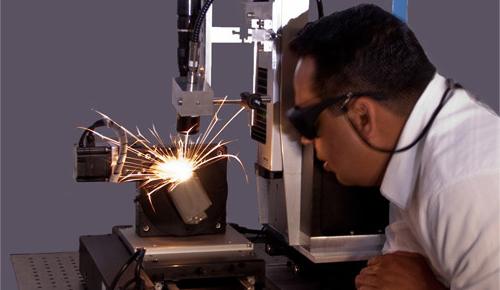You can connect metals in different ways. The most reliable and progressive way to obtain permanent connections of different products is laser welding. Thanks to this technology, it is possible not only to achieve great accuracy and accuracy, but also to combine materials with a high melting point or high thermal conductivity. A short, controlled melting period and a small amount of melt make it possible to weld even such parts for which conventional methods are not at all suitable.
Technology features
Laser welding is characterized in that the laser beam allows for a high concentration of energy at a point whose diameter does not exceed a few micrometers. The power level reaches 10 ^ 8 W / cm2, which is much more than, for example, an arc gives. In terms of energy concentration, laser welding can only be compared with an electron beam (its power is about 10 ^ b W / cm2). But if the latter can only be used in a vacuum chamber, then laser welding can be carried out in an environment with some kind of protective gas (CO 2 , He, Ar) or just in air. As for the control, it is carried out using an optical system. Laser welding is performed in a fairly wide range of modes, and this provides a high-performance process of joining all kinds of materials, the thickness of which starts from a few micrometers and reaches several tens of millimeters. Despite the fact that this process is very complicated and so far there is no universal theoretical model that could describe it in its entirety, it is widely used in practice, and for good reason.

Why laser metal welding is good
The undoubted advantages of this method include the following:
- High performance of this technology compared to other methods.
- A small heat-affected zone, which is limited only by the diameter of the laser. This allows to obtain greater technological strength and ductility of the connection.
- Ease of management and the ability to change the processing program.
- Environmental friendliness. A modern laser welding system eliminates the need for auxiliary welding materials and fluxes.
- The possibility of high-quality compounds of dissimilar metals.
- Very often it is possible to avoid the use of filler materials.
- Possibility of welding in places difficult to access.
For welding metal parts, gas and solid-state lasers are used, both continuous and periodic. The application of the described technology directly depends on the capacity of the plants. So, lasers, whose power lies in the range of 100-500 W, have long been used for welding small-sized components, for example, electronic components or medical devices. And installations capable of concentrating a higher level of energy (in the range of kilowatts) are often used together with robots and fiber optics. They are almost indispensable in the field of automotive, engineering, shipbuilding and other industries.